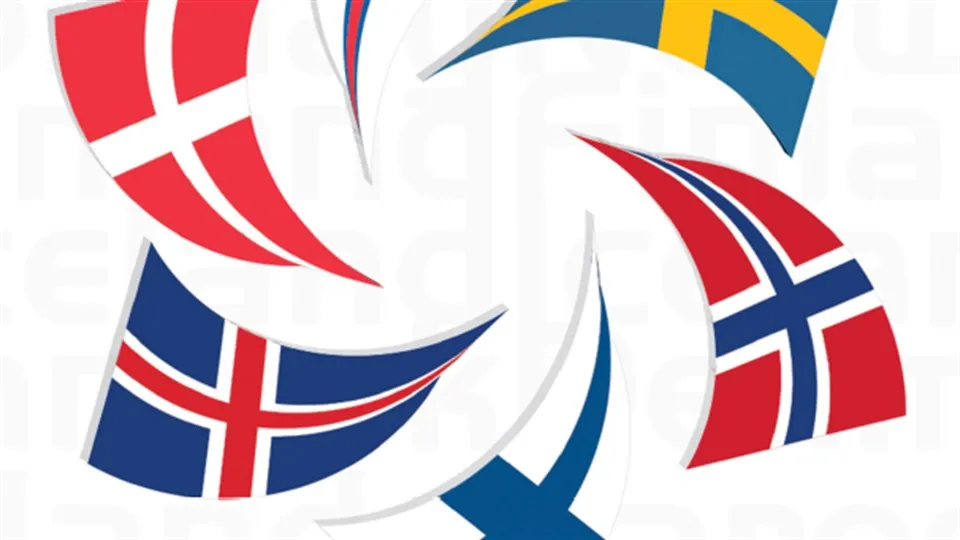All‑In
Building successful and sustainable collaboration requires commitment to goals and processes, as well as communication that link and sustain agreed upon activities. The purpose of this sub-project is to explore structures and processes that can be designed to support collaboration that is goal-driven and sustainable. The collaboration is intended to develop around an identified need, in which resources can be shared across groups to foster innovative approaches to a common need and purpose.
The following sections provide information to support the development of collaboration, including a discussion of network structures, alignment of processes and resources, building effective teams and communication systems using technology. The content is intended to serve groups in a variety of contexts to develop collaboration and as such is presented as a general guide.
-
Network structures
Network structures
Designing effective collaboration requires a structure within which to work and a system within which diverse activities can be carried out by the different partners. Network structures can provide a framework to support collaboration, that is both flexible and stable. A network is a rapidly evolving dynamic system of interconnectedness between people that develops based on a need to share resources. Networks serve multiple purposes, including:· Information sharing & Idea exchange
· Resource sharing
· Collaborative learning
· Cultural development
· Knowledge building
· Contribute with difference
· See problems in a new way
What makes the network sustainable?
Human networks emerge from a unifying purpose, along with independent and voluntary links, and with multiple leaders. The unifying purpose, systems of work, processes, values, and procedures, are all central to consistency across the network. As well, Multiple leaders are also a major characteristic of networks, where power comes from the unifying purpose and a specific function that advances the organization. In the next section, we address how to build strong collaborations that develop around a unifying purpose, alignment of processes, articulation of shared values and resources. -
Collaboration
Collaboration
What is collaboration? Collaboration is a process through which multiple persons or stakeholders work together toward a common goal (1) in which they co-create and co-discover. Typically, the different parties contribute something unique, whether it be knowledge, perspective, resources, or access, which makes the collaboration more value-able for the whole, as compared to groups working individually. The reasons for collaboration are numerous and typically are motivated by a need to share resource, information or expertise.What is important for successful collaboration?
Collaboration is designed around a set of persons or teams who together combine and align resources and processes to achieve a common goal. There are many different types of teams, including temporary and permanent, which can impact the quality of the collaboration. The more permanent the team the more important it is to build a culture of collaboration through communication, values, and common purpose.a common purpose, which is articulated, understood and agreed upon by all parties
team-building
a clear understanding of how the different parties in the collaboration will contribute with perspective and resources, including understanding the different contexts, strengths and weakness
an open communication about expectations, ways of working, and goals
a plan for meetings and dialogue
alignment of processes, people, and resources -
Building effective teams
Building effective teams
In this section we explore key elements to building teams. Particular emphasis is given to team development and communication in cross-cultural groups whether nationality or sector.How can we build effective cross-sector/functional teams?
Effective teams are catalyst and incubator for innovation. Research shows that teams often lack alignment between process and resource sharing which leads to failure. An alignment model can serve well collaborative processes, particularly when they are based on a network model of multiple actors and functions. In figure 1, the alignment model depicts four areas that are important to align to insure an effective collaboration:Team building: Teams serve an important energy for innovation and collaboration. Developing teams requires care and leadership that recognizes the interdependent nature of the different team members as part of a system. The tradition of working in isolation remains strong in many work settings, and is also culturally based, which means that developing teams for successful collaboration can require time. It is worth noting that most teams, and thereby collaboration, because of a lack of alignment between goals, resources and strategies. Building teams takes time. It is important to begin the collaboration with conversation to identify common goals, strengths, work processes, communication strategies.
Teams are influenced and impacted by a number of different factors:
Information flow: the speed and means with which information is shared and communicated
Degree of diversity: the variety of knowledge and skills that can be useful and important to achieving the goal, as well as cultural diversity, personality types, business forms, etc. Each of these elements contributes to a unique mix of strengths that can be utilized to benefit the team as a whole.
Richness of connectivity: refers to number and strength of connections between the members of the team, both within a local context and across trans-local/global contexts. The more people who are involved in the connectivity the greater the diversity of input to the network. At the same it is important to recognize the level of saturation after which too many connections become too complex to handle and thus ineffective for the collaborationBalance between innovation and stagnation: teams have an inherent energy that when facilitated can lead to innovation. If the team dynamics are no longer stimulated the collaboration stagnates. Aspects such as motivation, critical reflection, disagreement, anxiety are all positive elements in a team that can be used to inspire inspiration
Self-organising teams have a natural built in shared leadership. For this to sustain over time requires transparent communication, clarity about strengths, structure and trust among team members
Core values: teams are reliant upon the presence of core values: mutual trust, mutual respect, mutual participation, and mutual commitment. Building trust requires open, honest communication, a safe environment for dialogue, reflection and exploration, and a clarity of expectations that create a sense of reliance within the group -
Developing good virtual communication
Developing good virtual communication
Digital technology opens possibilities for collaboration supporting both synchronous and asynchronous communication. To support the collaboration, it is important to understand how communicating via digital media can alter the quality of communication and thereby the group dynamics. The following are a few of the dimensions that impact cross-cultural team communication in virtual environments:- Choose the right communication tool to fit the needs of the group
- Develop understanding about how each member communicates best
- Structure your communication
- Building the foundations for virtual communication and team workBuild Context
- create presence
- learn about tips for effective video conferencing
- developing group dynamics and facilitating dialogue in a virtual environment
- establishing technological savvy among all members
-
Design thinking for identifying needs and innovating
Design thinking for identifying needs and innovating
Innovative practices from design are stimulating new dynamics in collaboration with a focus on co-creation and shared customer value. Traditional approaches to development typically engage a small set of actors who define and lead the development for others. In Design thinking, all actors who are impacted by a collaboration are part of the mix, who together, co-identify and create goals, processes and outcomes.Design thinking is a process of developing solutions to problems through a systematic iterative method that invites exploration and exploitation of new ideas. As a general approach design thinking aims to open new spaces for creativity that foster deeper understandings of the problem, the needs of the customer, and what is possible within the collaboration to best meet the identified needs.
Design thinking involves five phases, each of which aims to help the group arrive at the best possible approach or design to meet the needs of the customer.
Phase 1: Emphasize: The intent in this phase is to observe, listen, and engage with the context or problem of interest, dialogue, focus groups, surveys, storytelling, observations are among the tools that can serve to develop empathy.
Phase 2: Define: The second phase involves framing the problem by synthesizing what is understood and observed in stage 1.
Phase 3: Ideate: The third phase involves brainstorming and formulating solutions that can be developed and tested.
Phase 4: Prototype: During the prototype phase small-scale versions or parts of a larger solution are developed
Phase 5: Test: During the final phases, the prototypes are tested in real-life scenarios, typically on a smaller scale. As well simulations can serve well to test the prototypes.
-
Putting together the pieces
Putting together the pieces
When you are ready to begin building a collaboration it is recommended that you approach the process in stages. It takes time to build purpose, process and teams. The stages of the process are based on a quality management model that reflects the “what, why, when, how, and where” of your common work. Together, these components reflect a system of work for achieving a common vision. In quality management it is not enough to identify work tasks alone; it is most essential to have a vision that is commonly shared that connects the people, processes and resources together in a system.
The content and questions provided you earlier in this document can serve your group as you begin to build a common vision, identify what you want to do and develop the processes for achievement. It will be important in this development phase to give time and consideration to team development and communication as well.
In the first step, it is recommended that members of the collaboration take time to discuss and agree upon a common vision and goals for the collaboration. Why do you want to collaborate? how can you benefit from a collaboration? Why is the collaboration important? Reference to Part 2: Collaboration above can be useful in this stage of development. Design thinking may also serve the needs of the group at this stage, although it is recommended that it be applied in step 2 below.
In step two, it is time to identify and concretize activities that will be carried out by the different team members to achieve your common goal. Here you can discuss how you will link activities based on the network structure discussion in Part 1. The section on building teams can serve you well to talk about what resources and strengths exist in the team to achieve the goals. Depending on the maturity of the group, it may be important to conduct a needs assessment to determine more specifically what the interest of the stakeholder groups is to know what kind of activities are best suited to achieve the common purpose and vision of the collaboration. Design thinking, as presented earlier, is recommended as one such process that can serve this purpose.
In step three, you are ready to design and plan the actual activities and processes. Be sure to talk about how the activities will be connected, how resources will be shared, who will do what? when? and what processes for communication will be used to serve the collaboration? The section on team building and developing good virtual communication may be particularly helpful here.
Facts
Project period
200101—191201
Subjects
Project leader

